Chickens cluck happily and clothes dry on the line in the midday sun. An occasional breeze rustles the leaves of the trees surrounding the garden. A sprinkler is showering freshly planted greens with water pumped from the stream at the bottom of the hill.
Alice Wangu Mwaura looks around her farm with a soft smile – quietly proud of all that she has accomplished.
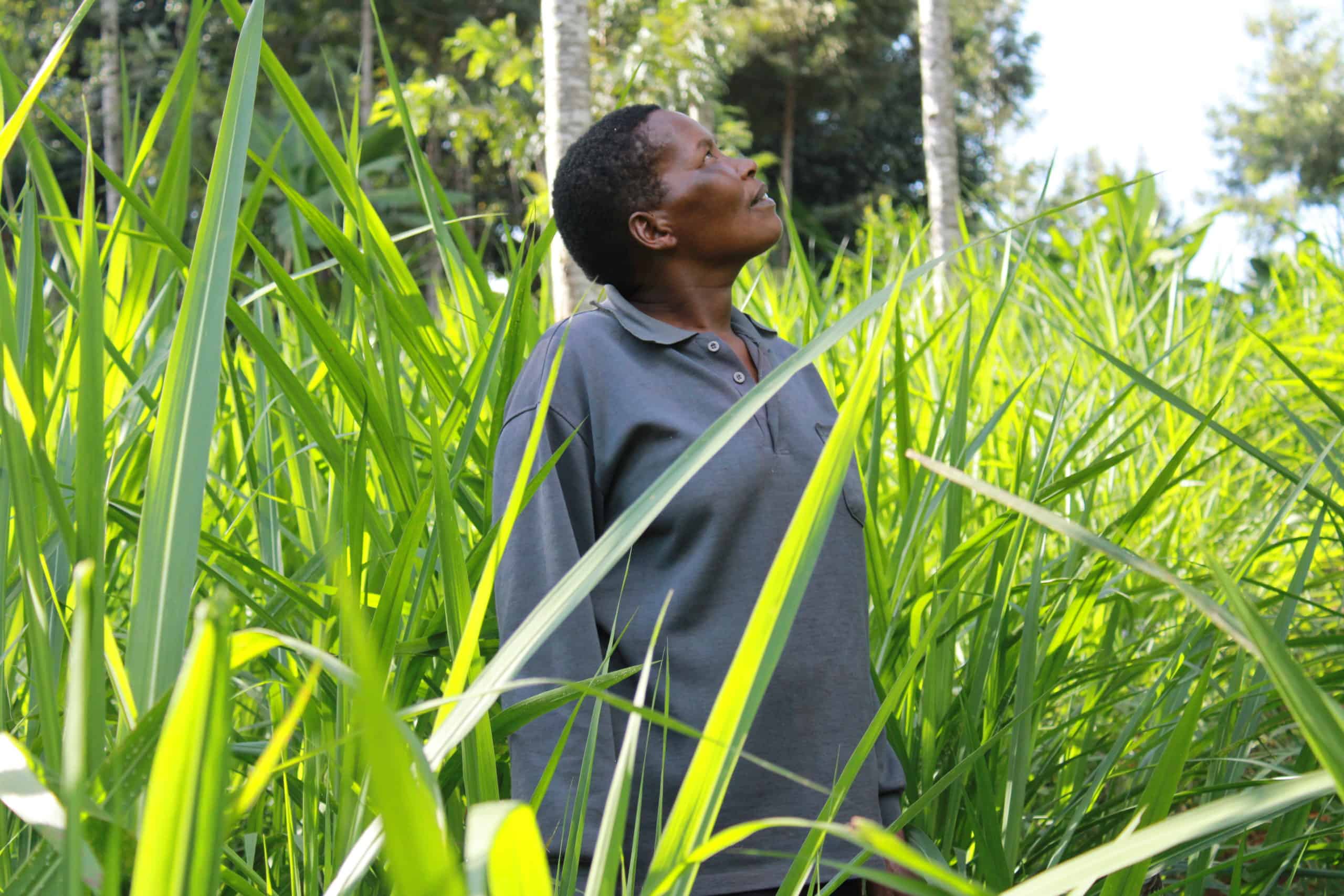
“I used to do one or two crops on the land for the whole year. I would start at the beginning of my farm and go down to the river,” she recalls. “At times, I found the harvest would fail. I found it very difficult to make ends meet.”
Today, Alice’s farm looks entirely different. A diverse mix of trees climb into the sky in every direction. Counting the different types of produce is a challenge – every turn reveals a new bed of vegetables or greens. For Alice it’s easier to distinguish what’s growing, because she has planted and cared for all of it.
An abundance of tree and food species fill Alice’s Central Kenya farm.
“I have diversified my farm in a big way. I have spinach, onion, leek, cabbage, zucchini, bananas, nightshade, amaranth. Also, various types of fruits including papaya, avocado, mango, and many others. I’ve also planted a living fence of fodder trees including calliandra, trichandra, mulberry, and many other trees.”
To some the placement of each tree or garden bed may seem random, but to a practiced eye there is an abundance of sustainable farming techniques in use, all thoughtfully done to benefit both land and farmer.
This living, breathing farm is called a Forest Garden.
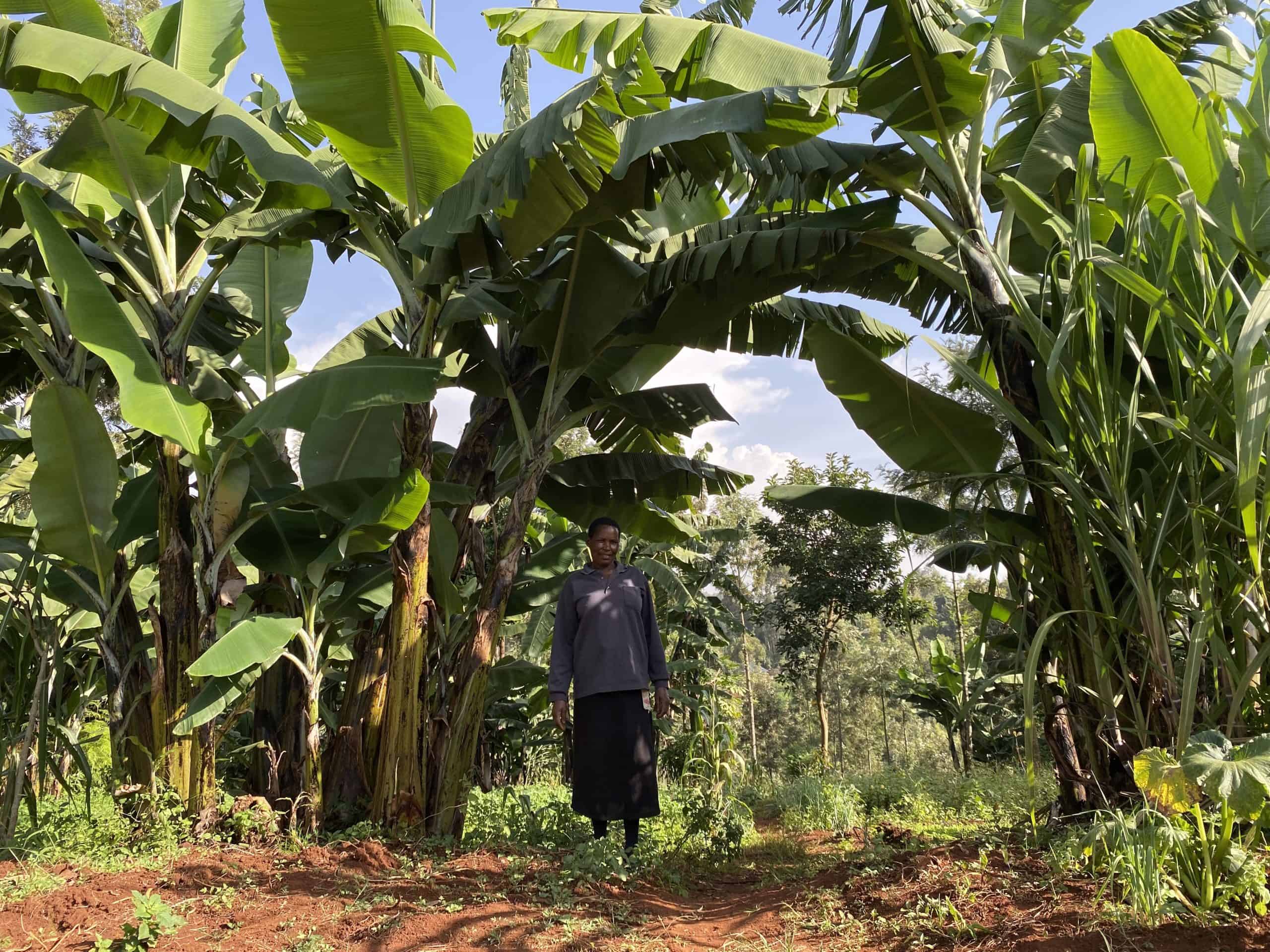
Alice planted and nurtured her Forest Garden with help from nonprofit Trees for the Future (TREES). Local TREES staff work with farmers like Alice over a four-year period, teaching them how to revitalize their land and livelihoods using the Forest Garden Approach. TREES provides the training, seeds, and resources farmers need to establish a Forest Garden and thrive on their land long-term.
“Right now, my farm is very different from what it used to be before I joined Trees for the Future,” she says. “I have very many varieties of vegetables, cereals, fruit trees, and also fodder trees and timber. With this I’m able to feed my family and still have produce and resources to sell.”
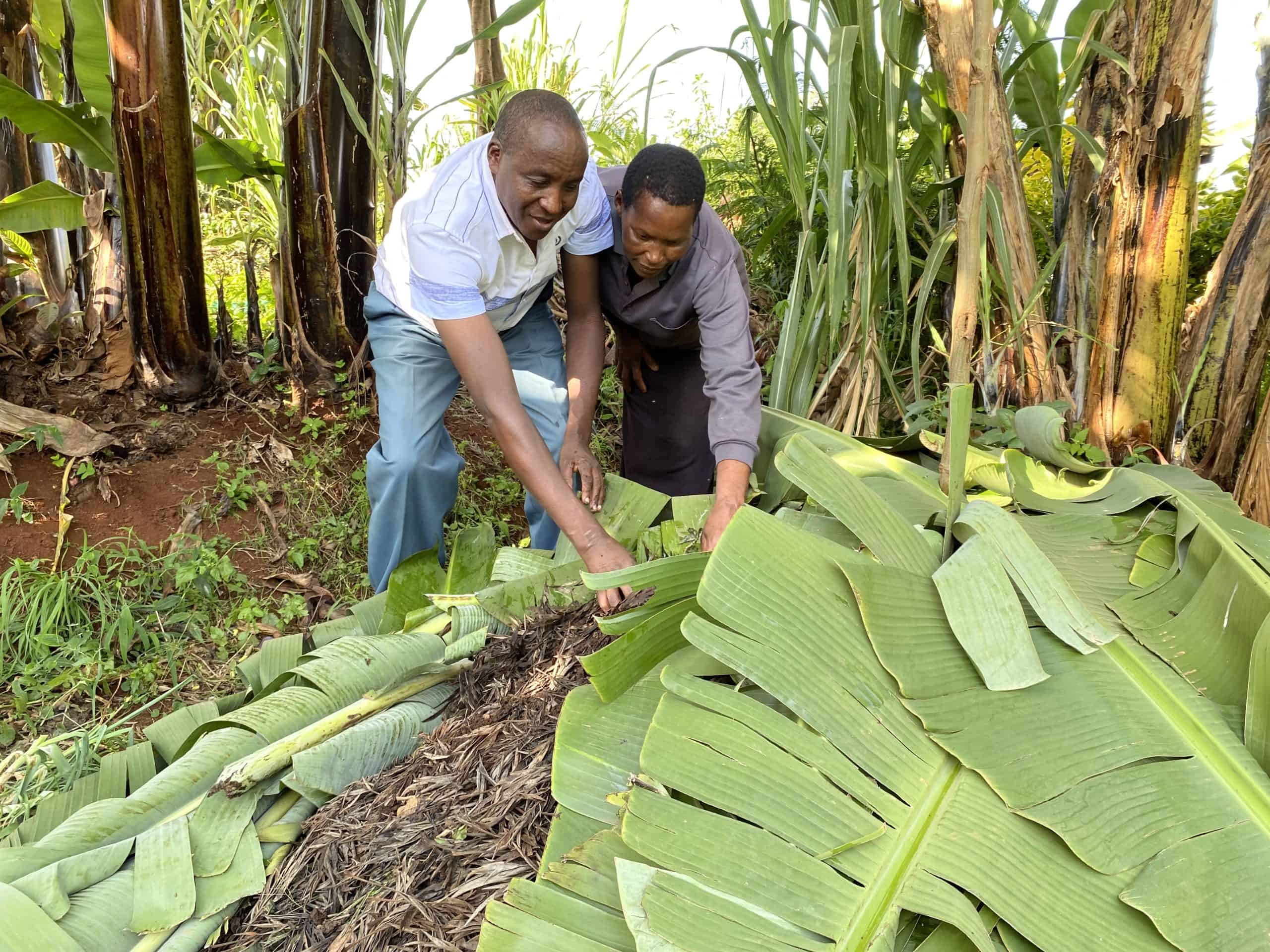
TREES technician Paul Kihara and Alice check to see how her compost is doing.
Before establishing her Forest Garden, Alice, like most farmers in the world, was practicing monocrop agriculture. She spent her money on expensive seeds and had just a few chances to make an income each year. Monocrop farmers are encouraged to clear their land of trees and other plant life. They often use chemical pesticides and fertilizers to increase their yields. These chemicals are not just costly for the farmer, they have a steep environmental cost as well.
In fact, agricultural land use is one of the leading causes of land degradation and climate change. What’s more is that these damaging practices are often failing to provide the nutritional and economic value that the farmers themselves are counting on to survive.
“When farmers plant just one or two crops, they have less to eat and sell and they’re degrading their land in the process,” says Stephen Murimi TREES Technician Supervisor for Kiambu. “Forest Gardens address the root causes of hunger, poverty, and land degradation. Farmers like Alice are proof that there is a better way for both people and our planet.”
TREES staff have trained more than 60,000 farmers on the Forest Garden Approach since 2014. Forest Garden farmers report increased income and economic resilience. Families have a variety of healthy foods available year round and their access to key nutrients increases by more than 700%.
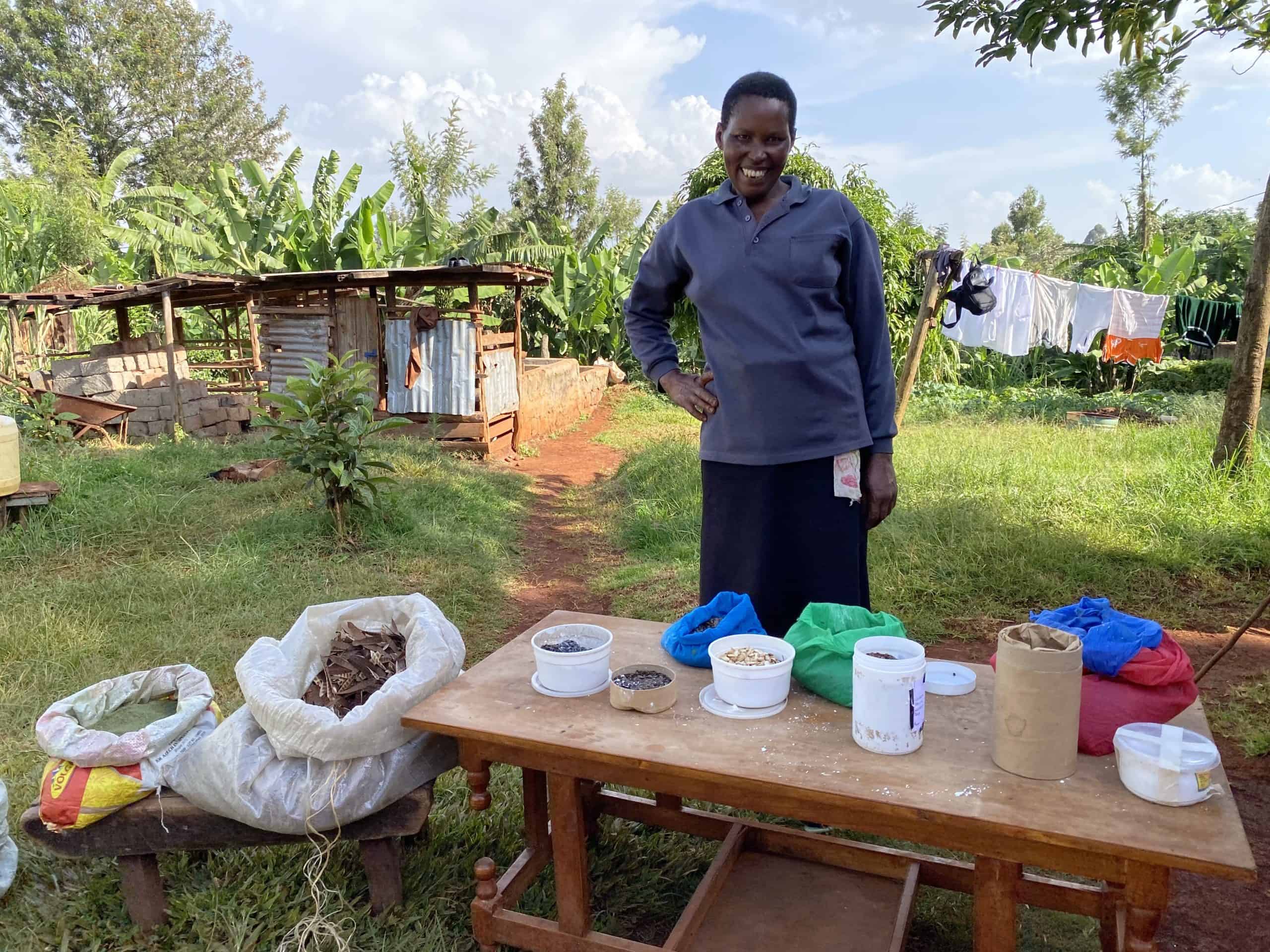
Alice is running a profitable seed business with the knowledge and skills she gained from her training.
Farmers are also encouraged to explore additional streams of revenue in their Forest Garden too. Alice learned how to save and store seeds through her training. Now, she has a profitable seed business. Now, she looks forward to passing her knowledge on to others. She has been so successful in her Forest Garden and business ventures that she even hires employees on her farm during planting and harvest seasons. And while she enjoys sharing her knowledge with other farmers who stop by for advice, she says she hopes those who see her success will join the program too.
“Occasionally, because they come to my land, I’m able to offer them advice and they can copy what I’m doing and they appreciate it,” she says. “But… I would encourage them to join TREES to get training and instructions firsthand so that they can get as much knowledge and skills as I have acquired.”
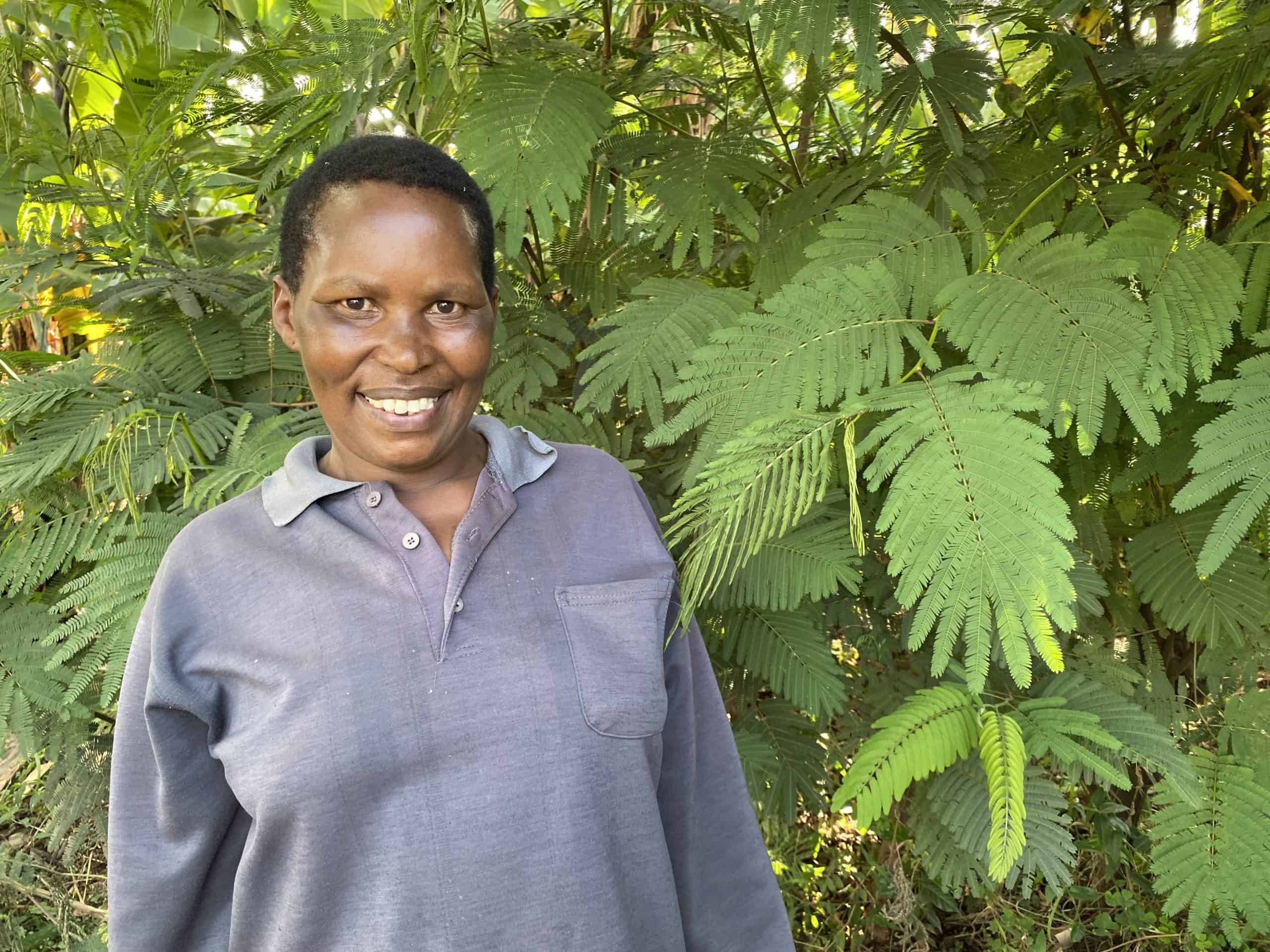
Today, Alice has 3,000+ trees growing in her Forest Garden.
While farmers’ lives improve, so does their property. TREES has helped farming communities plant 278 million trees and restore 71,000 acres of land since 1989. The average TREES Forest Garden is roughly an acre in size and is made up of 2,500+ trees and dozens of species of trees and crops. Each Forest Garden restores and supports local ecosystems and can capture 144.64 metric tons of CO2 over 20 years.
Alice first joined the program in 2016. Today, she has more than 3,000 trees on her property… and she isn’t stopping there.
“Tomorrow, I’m going to plant some trees.”
Help reach more farmers like Alice with a donation today.